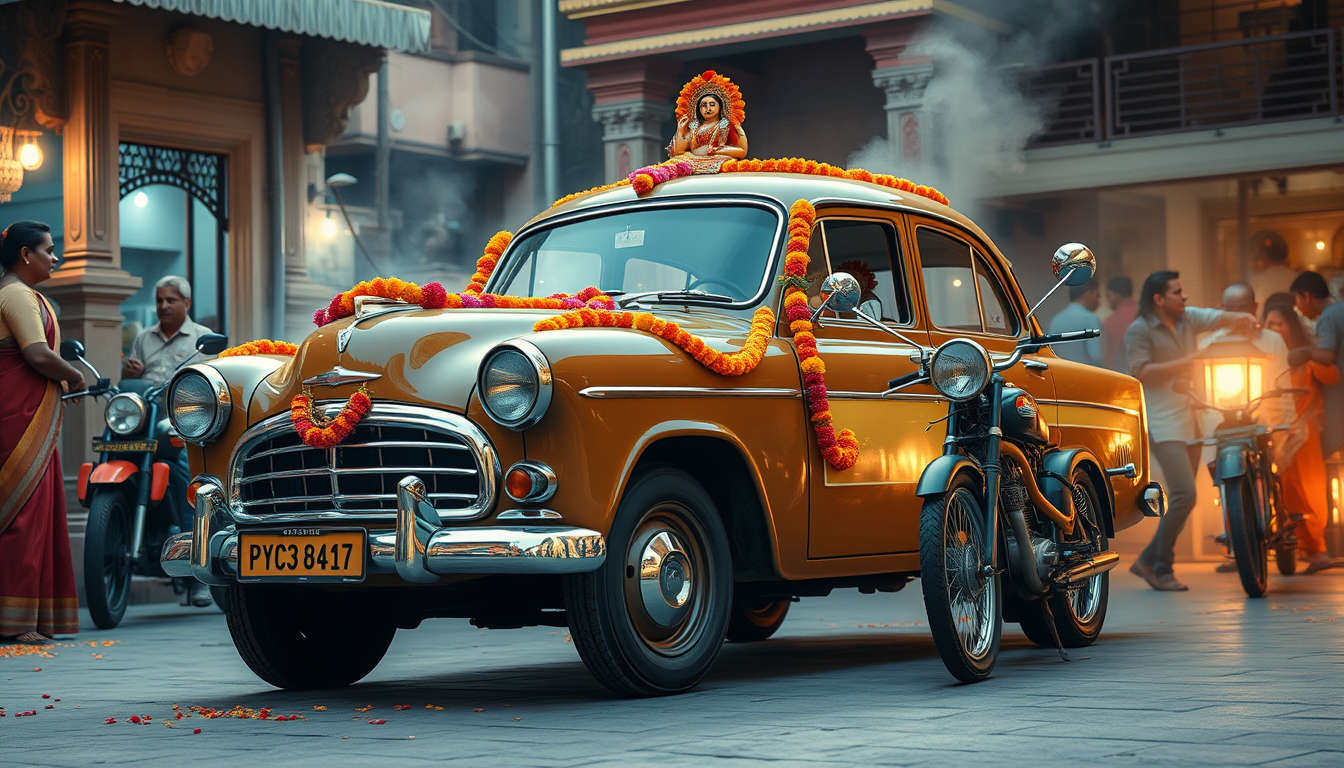Introduction
In the vibrant and diverse culture of India, the tradition of car puja holds a unique significance. Car puja, or the worship of vehicles, is a practice deeply rooted in the country’s spiritual and cultural heritage. This article delves into the intricacies of Indian car puja, exploring its historical background, cultural significance, and the rituals involved.
Historical Background of Car Puja
Ancient Origins
The concept of car puja can be traced back to ancient times when vehicles were not merely means of transportation but were considered sacred entities. In the Vedic period, chariots and horses were revered as symbols of power and strength. This reverence extended to other forms of transportation as well, including carts and bullock carts.
Influence of Hinduism
Hinduism, with its rich mythology and symbolism, has significantly influenced the practice of car puja. In Hindu mythology, vehicles are often associated with deities. For instance, Lord Ganesha, the elephant-headed god, is often depicted riding a mouse, and Lord Kartikeya, the god of war, is associated with a peacock. These associations have led to the belief that vehicles can be blessed and protected by divine entities.
Cultural Significance of Car Puja
Symbolism of Vehicles
In Indian culture, vehicles hold symbolic significance. They represent various aspects of life, such as progress, prosperity, and protection. Cars, in particular, symbolize modern progress and the ability to navigate through life’s challenges.
Social and Economic Impact
Car puja also has a significant social and economic impact. In rural areas, bullock carts and tractors are essential for farming and transportation. The puja of these vehicles ensures their smooth functioning and longevity, which is crucial for the livelihood of farmers.
Community Bonding
Car puja often brings communities together. The rituals involve collective participation, which fosters a sense of unity and shared purpose. This communal aspect is particularly evident in rural areas where vehicles are crucial for the daily lives of people.
Rituals Involved in Car Puja
Preparation
The preparation for car puja involves several steps. The vehicle is cleaned thoroughly, and a red cloth is draped over it. This cloth is often adorned with flowers and garlands. The vehicle is also decorated with colorful streamers and lights.
Puja Ceremony
The puja ceremony itself is a vibrant affair. It begins with the invocation of the divine entities associated with the vehicle. This is followed by the offering of prayers, flowers, and sweets. The vehicle is then anointed with holy water and turmeric paste. The priest chants mantras and performs rituals to bless the vehicle.
Offerings
Offerings play a crucial role in car puja. These include fruits, sweets, and other edibles. The offerings are made to the divine entities associated with the vehicle. The belief is that these offerings will ensure the protection and prosperity of the vehicle.
Blessing
The final step in the car puja is the blessing of the vehicle. The priest performs a ritual where he touches the vehicle with a sacred object, such as a conch shell or a mace. This is believed to bless the vehicle and protect it from harm.
Regional Variations of Car Puja
North India
In North India, car puja is often associated with the worship of Lord Ganesha. The rituals involve the decoration of the vehicle with images of Lord Ganesha and the chanting of his mantras. The puja is usually performed during the festival of Ganesh Chaturthi.
South India
In South India, car puja is often associated with the worship of Lord Murugan. The rituals involve the decoration of the vehicle with images of Lord Murugan and the chanting of his mantras. The puja is usually performed during the festival of Murugan.
West India
In West India, car puja is often associated with the worship of Lord Kartikeya. The rituals involve the decoration of the vehicle with images of Lord Kartikeya and the chanting of his mantras. The puja is usually performed during the festival of Kartik Purnima.
Modern Interpretations of Car Puja
Urbanization and Technology
With the advent of urbanization and technology, the practice of car puja has evolved. In urban areas, car puja is often performed in a more modern and streamlined manner. The rituals may involve the use of technology, such as the use of digital mantras and the broadcasting of the puja ceremony.
Environmental Concerns
In recent years, there has been a growing awareness of the environmental impact of vehicles. As a result, some interpretations of car puja now emphasize the importance of maintaining the vehicle in an eco-friendly manner. This includes the use of fuel-efficient vehicles and the adoption of green technologies.
Challenges and Criticisms
Over-Commercialization
One of the challenges faced by car puja is over-commercialization. The practice has become increasingly commercialized, with businesses and corporations using it as a marketing tool. This has led to concerns about the dilution of the spiritual significance of the practice.
Environmental Impact
Another challenge is the environmental impact of car puja. The rituals often involve the use of large amounts of water and other resources, which can have a negative impact on the environment. There is a need for a more sustainable approach to car puja.
Conclusion
Indian car puja is a rich and complex tradition that reflects the country’s spiritual and cultural heritage. It holds significant symbolic and practical value, bringing communities together and ensuring the smooth functioning of vehicles. Despite the challenges and criticisms, car puja continues to evolve and adapt to the changing times, ensuring its relevance in the modern world.
References
1. “The Practice of Car Puja in India” by Dr. Amitabh Gupta
2. “Vehicles and Veneration: A Study of Car Puja in India” by Dr. Meera Singh
3. “The Cultural Significance of Car Puja” by Dr. Ravi Kumar
Keywords
Indian car puja, car worship, vehicle blessing, Hindu rituals, cultural significance, regional variations, modern interpretations, environmental impact, over-commercialization.
